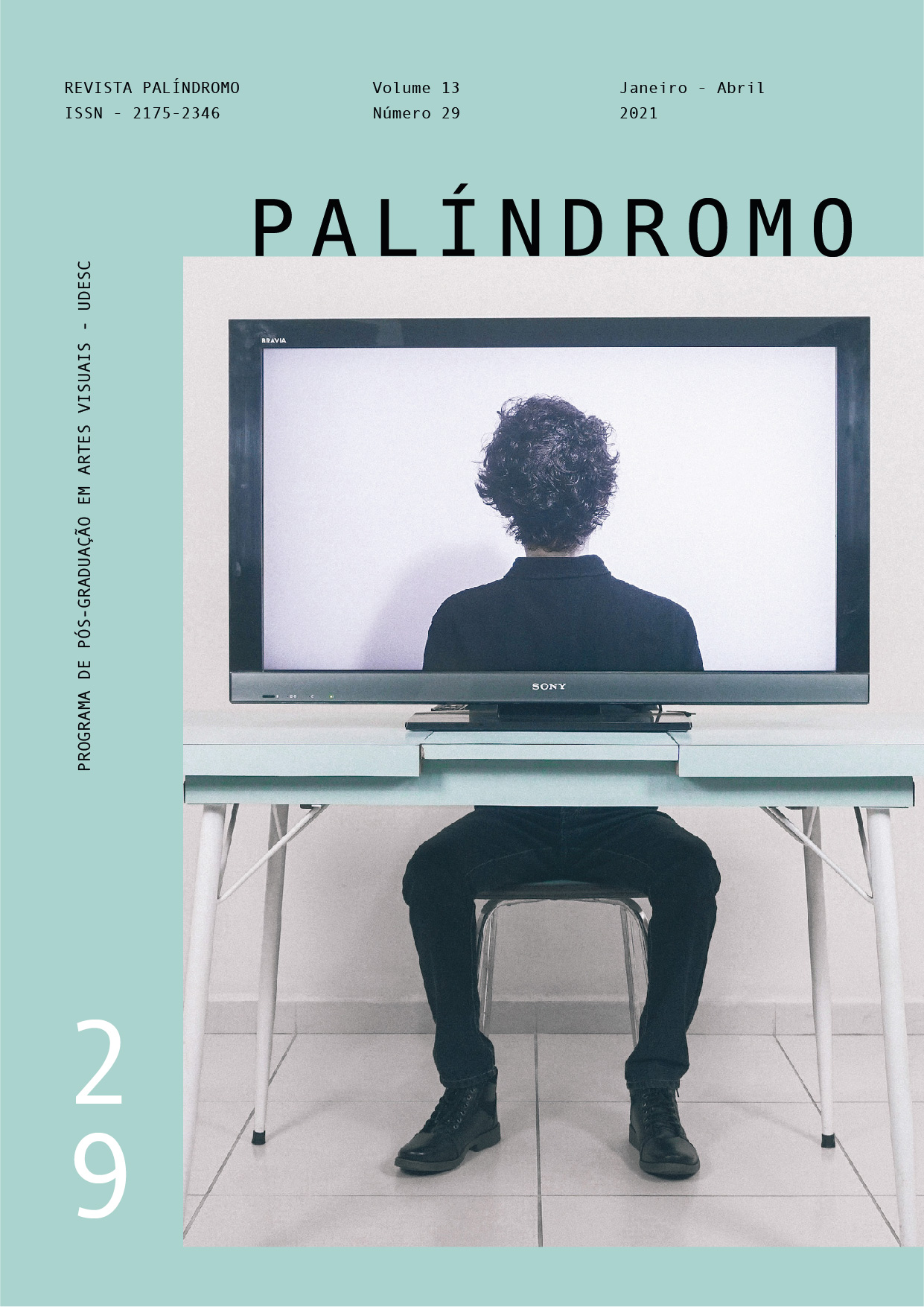Digital hybridization of plastic arts courses in Master teaching:
a tool, a means? For what issues?
DOI:
https://doi.org/10.5965/2175234613292021022Keywords:
Mix-learning., Postgraduate education., Teacher formation., Visual arts.Abstract
In the context of the global health crisis, our research started four years ago on the question of how to reconcile the teaching of the plastic arts and their practice within the training of the future teacher of schools when there is less and less hours of face-to-face lessons is all the more a topical subject. Indeed, at the present time, university courses are conducted remotely. Our study thus raises the question of the quality and content of the distance course in order to bring about plastic practices among students, future teachers. The hourly decline of this teaching over the past few decades questions the legitimacy, the stakes and the place of the student’s plastic practice. Likewise, the changes and challenges of teaching methods, particularly the emergence
of hybrid training through the use of digital technology, question posture changes in the trainer.
Downloads
References
ARDOUIN, I. L’éducation artistique à l’école, Pratiques et enjeux pédagogiques,
ESF, 1997.
BOLTANSKI, L. ; THEVENOT, L. De la Justification, les économies de la grandeur,
Gallimard, 1991.
GABILLIET, P. Savoir anticiper, ESF, Formation permanente, 1999.
JACQUINOT-DELAUNAY, G. ; FICHEZ, E. L’université et les TIC: chronique d’une
innovation annoncée, 2008.
LADAGE, C. L’hybridation dans l’enseignement universitaire pour repenser l’arti-
culation entre cours magistraux et travaux dirigés. Revue internationale de Péda-
gogie de l’Enseignement Supérieur, 32-2, 2016.
PAQUIENSEGUY, F, & PEREZ-FRAGOSO C. L’hybridation des cours et l’intégration
de l’injonction à produire. Distances et savoirs, 4-9, 2011.
PERAYA, D, CHARLIER, B, & DESCHRYVER, N. Une première approche de l’hybrida-
tion. Education & Formation, e-301, 2014.
POULOT, D, PIRE, J-M, & BONNET, A. L’éducation artistique en France, des modèles
académiques aux pratiques actuelles. PUF Rennes, 2010.
RUPPIN, V. Les arts plastiques en France : une discipline scolaire en mutation, Spi-
rale, 58, 2016.
RUPPIN, V. De l’art que l’on dit à l’art qui se fait : étude menée dans les classes à
projets artistiques à l’école primaire. Revue des Sciences de l’éducation, 40, 2014.
RUPPIN, V. ; SAFADI, S. Construire un « à-venir » ? Tout est dans la manière. Usage
de la modélisation dans l’enseignement des arts plastiques, PU Rennes, sous presse
RUPPIN, V, SAFADI, S, & ZARAGORI, A. How to mobilize visual arts as a form of ci-
tizen expression In YearBook: Student Voice in education, CIDREE Consortium of Institutions for Development and Research in Education in Europe, 2019.
VINCENT, G. L’école primaire française, Lyon, PUL, 1980. DOI: https://doi.org/10.4000/books.pul.30073
WESTBERRY, N, & FRANKEN, M. Pedagogical distance: explaining misalignment in
student-driven online learning activities using Activity theory. Revue Teaching in
Higher Education, 2015.
Published
Versions
- 2021-02-02 (2)
- 2021-01-01 (1)
How to Cite
Issue
Section
License
Copyright (c) 2020 Virginie Ruppin

This work is licensed under a Creative Commons Attribution 4.0 International License.
COPYRIGHT STATEMENT
The articles published by the magazine are free to use, intended for academic and non-commercial applications. Copyright is all assigned to the magazine. The articles whose authors are identified represent the expression from the point of view of their authors and not the official position of Palíndromo Magazine. The author (s) commits to whenever they publish material referring to the article published in Palíndromo mention this publication as follows:
This article was originally published by Palíndromo magazine in its volume (place the volume), number (place the number) in the year of (place the year) and can be accessed at: http://www.revistas.udesc.br/index.php/palindromo


